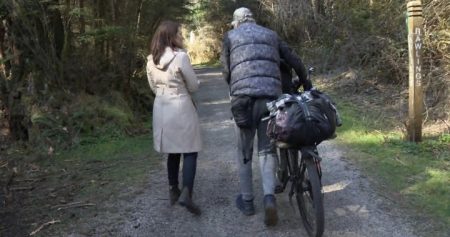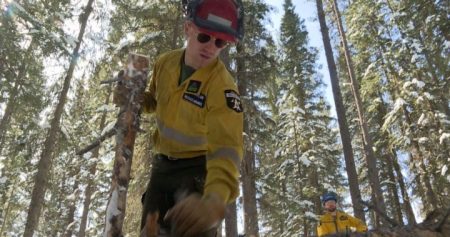Rescuers working to save an orphaned whale calf stranded near a remote Vancouver Island community have been facing challenges due to low tides, hindering their efforts to reach the animal. Fisheries and Oceans Canada officials are re-evaluating their techniques and planning for the next steps. The most promising tool used so far has been a “sound wall,” created by Oikomi metal pipes to guide the whale towards an exit point across a shallow sandbar and back to the open ocean. Despite the complexity and dangers of the operation, the whale calf appears to be in good condition, and its health is being monitored continuously.
The two-year-old calf’s mother died in the lagoon last week while local residents attempted to free her. A necropsy revealed that the 15-year-old killer whale was pregnant with a female fetus at the time of her death. Various methods, including recorded whale calls, specialized guide lines, and Indigenous drum beats, have been employed in an attempt to coax the calf out of the lagoon. However, the calf has been hesitant to pass over the sandbar where its mother perished. Scientists were surprised by the whale calf’s adverse reaction to the recorded whale calls, as these sounds typically attract whales in dangerous situations.
The remote location of the stranded calf has posed additional challenges for the rescuers, as it is located on the northwest tip of Vancouver Island. The local road contractor has offered its equipment to assist in the rescue operation, and the Ehattesaht First Nation and the local community have established a makeshift boat ramp for on-water access to the lagoon. The area’s inaccessibility has made the operation more difficult, with shifting wind, rain, and tidal conditions adding to the complexity of the rescue mission. Despite these challenges, the rescue team continues to work towards guiding the whale calf to safety.
Efforts to utilize underwater playback sounds, which are typically effective in attracting whales out of dangerous situations, have proven to be unsuccessful with this particular whale calf. The sound wall created by the Oikomi metal pipes has been widely used to deter marine mammals from approaching oil spills, but its effectiveness in guiding the calf out of the lagoon remains uncertain. While the whale has come close to leaving the lagoon, it has been reluctant to pass over the sandbar where its mother died. The evolving situation calls for ongoing monitoring of the calf’s health and careful planning of the next steps in the rescue operation.
In conclusion, despite facing challenges related to low tides, remote location, and the whale calf’s reluctance to leave the lagoon, rescuers remain committed to ensuring the calf’s safety. The complex and dangerous natural environment in which the operation is taking place requires constant re-evaluation of techniques and innovative solutions to guide the whale back to open ocean. The collaborative efforts of various organizations, including Fisheries and Oceans Canada, local residents, and the First Nation community, highlight the importance of collective action in wildlife rescue operations. The ongoing monitoring of the whale calf’s health and the dedication of the rescue team exemplify a commitment to saving this orphaned animal and returning it to its natural habitat.















